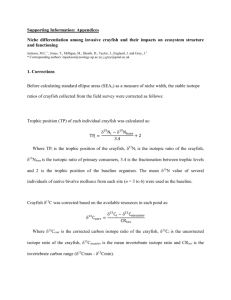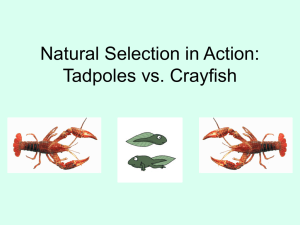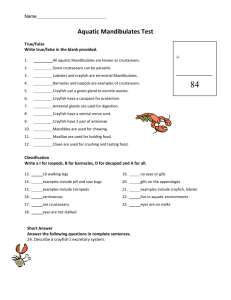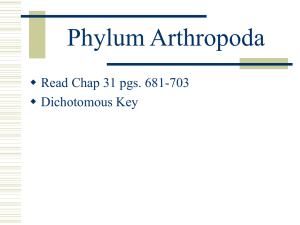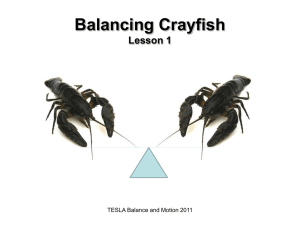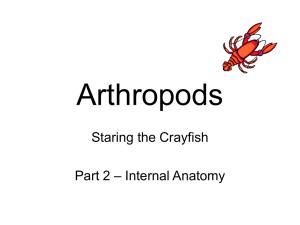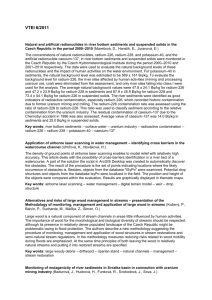Final report
advertisement
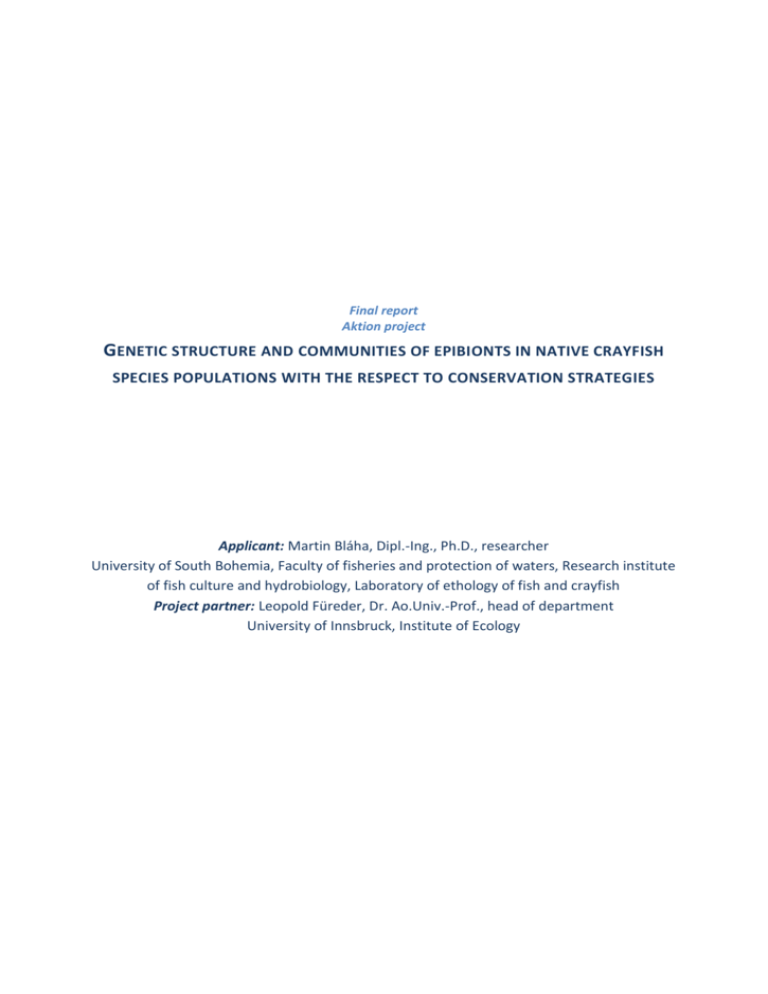
Final report Aktion project GENETIC STRUCTURE AND COMMUNITIES OF EPIBIONTS IN NATIVE CRAYFISH SPECIES POPULATIONS WITH THE RESPECT TO CONSERVATION STRATEGIES Applicant: Martin Bláha, Dipl.-Ing., Ph.D., researcher University of South Bohemia, Faculty of fisheries and protection of waters, Research institute of fish culture and hydrobiology, Laboratory of ethology of fish and crayfish Project partner: Leopold Füreder, Dr. Ao.Univ.-Prof., head of department University of Innsbruck, Institute of Ecology People participating in this project: Researchers: Leopold Füreder (UNI) and Martin Bláha (FFPW USB) Students: Benedikt Zeindl and Johannes Rüsch (UNI), Lenka Půbalová (Agriculture Faculty USB) and Filip Ložek (FFPW USB) Main goal of this project was to start with cooperation between two laboratories/institutes close by their research topics and interests. Project results were: stay of Martin Bláha at University of Innsbruck, when Leopold Füreder initiated Martin Bláha to the methods of sampling and distinguishing crayfish epibiontsbranchiobdellids and MB together with two students sampled several noble crayfish populations. Stay of Benedikt Zeindl at University of South Bohemia, Faculty of fisheries and protections of waters, laboratory of ethology of fish and crayfish when Martin Bláha taught him common molecular methods using for population genetic study. Benedikt Zeindl together with Martin Blaha analysed several Tyrolean crayfish populations - results of noble crayfish population genetic analysis will be a part of master thesis of Benedikt Zeindl. Martin Blaha acts as the external supervisor. Leopold Füreder travelled also to Vodnani, where the Director Paval Kozak invited the team to define future common research activities in the field of crayfish biology. The results from sampling and analyses of crayfish genetics and branchiobdellid community structure and genetics will be published by the two teams as soon as they are available. Activities: Martin Bláha (MB) was in Innsbruck University from 26th to 29th May and in the period from 15th to 19th September. During first visit, two master students Benedikt Zeindl and Johannes Rüsch were introduced to him, working also on crayfish. First of all, promising sites for sampling noble crayfish for population genetic analyses were selected. Leo Füreder (LF) gave a brief lesson to MB about methods of branchiobdelids sampling and distinguishing. Sites with original population of noble crayfish as well as recently established ones were visited by MB, Benedikt Zeindl (BZ) and Johannes Rüsch (JR), and crayfish traps were laid there. Next day, all traps were checked and caught crayfish were measured and weighted and branchiobdellids were taken from those specimens with their presence as well as part of leg of crayfish for genetic analyses. Noble crayfish specimens were caught only on one site (Teich Brown), while no crayfish were caught in other sampling sites, ponds Weiher at Strad, Weiher between Strad & Tarrenz and Weiher at Tarrenz. Besides this field work, students discussed their topics and work with MB and LF. Next visit was planned and other sites with original occurrence of noble crayfish were selected for sampling. Sampled branchiobdellids from Teich Brown were analysed by student Lenka Půbalová (AF USB) as a part of her bachelor thesis named “Epibionts of crayfish”. During second stay, MB was travelling from Innsbruck to St. Johann together with BZ and JR. Previously selected sites, four brooks (Krebsbach, Brunnbach and Wenger Brunnbach and Gieringer Weiherbach) and one mountain lake (Taubensee) were sampled for noble crayfish. Their presence was confirmed only in Taubensee and Gieringer Weiherbach. Noble crayfish specimens from these two sites were measured and weighted, branchiobdellids were taken and part of crayfish leg for molecular analyses as well. The date of BZ and LF visit in laboratory of ethology of fish and crayfish in University of South Bohemia was arranged at the end of MB’s stay in St. Johann/Innsbruck. Sampled brachnchiobdellids will be analysed by Filip Ložek (FFPW USB) as a part of his master thesis enrolled this autumn. Thesis is named “Community of branchiobdellids on non-native crayfish species in Czech Republic” and samples from Austrian noble crayfish specimens will be used as a reference for molecular analyses. Benedikt Zeindl spent two weeks (from 7th to 21st October) in Faculty of fisheries and protection of waters (FFPW), Laboratory of ethology of fish and crayfish, where he learned common molecular methods used in population genetics. MB showed BZ step by step the process from DNA isolation, PCR preparation and particular markers amplification to data processing and interpreting the result from mitochondrial DNA as well as from microsatellite data. Together, they started to analyse more than 160 specimens from 8 populations of noble crayfish for set of six microsatellites and assessed haplotype diversity for two mitochondrial genes. Those samples were from Austrian noble crayfish population (Hechtsee, Thiersee, Möserer See, Pfrillsee, Walchsee, Brenjursee, Teich Brown, Taubensee). Results from this analysis will be a part of BZ’s master thesis, when finished. At the end of BZ stay, Leopold Füreder spent five days (from 17 th to 21st October) at FFPW in Vodňany. Branciobdellids from two populations of noble crayfish were sampled during those days, and meeting with Ass. prof. Pavel Kozák, Ph.D. (director of Research institute of fish culture and hydrobiology, and head of laboratory of ethology of fish and crayfish) was also arranged. Possibility of next collaboration, in the meaning of topics and calls was discussed. Budget of this project was intended for travelling costs and part for material for molecular analyses (separation gel for fragment analyses). Because stays planned by applicant were not spent completely (three planned, two realized) remaining money were spent for more material used during BZ stay and work in molecular laboratory, namely Macherey-Nagel Nucleospin Gel and PCR Clean up kit. This one is used for cleaning PCR product before sending for sequencing service. In Vodňany, 25th October 2013 Martin Bláha, Ph.D.

